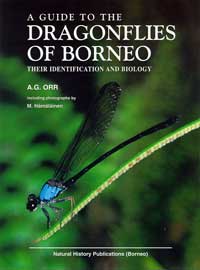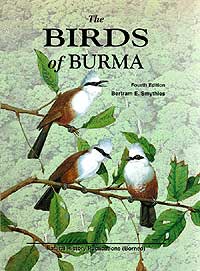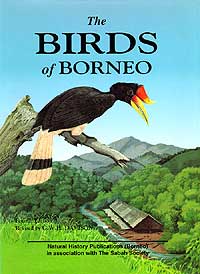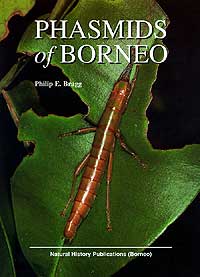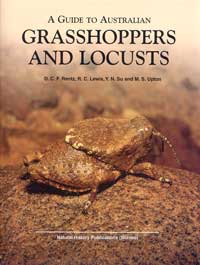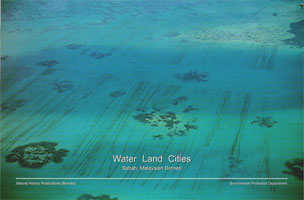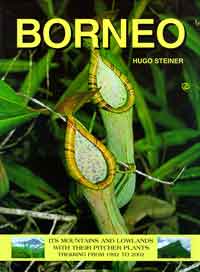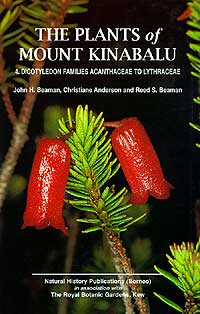BanLoong.com
| Postcard | Orangutan Plushtoy | Books | About Us | Contact Us |
| Sompoton | Beads Accessories | Links | Main Page |
|
|
The Natural History of Orang-utan The name "orang-utan" conjures up very different images to different people: shy, elusive man of the forest; a tantalising glimpse into unknown worlds of the jungles of the Far East; an endearing, appealing and amusing star of popular movies; the highlight of a visit to the zoo. But what is the true nature of the orang-utan? It is in the record book for several reasons: it is one of our closest relatives; it is the largest primate in Asia; and is the largest tree-dwelling animal in the world. Once more widespread, the orang-utan now occurs only in the tropical rain forests of Sumatra and Borneo, and its range and numbers are still shrinking rapidly. This richly illustrated book takes us into the natural world of the orang-utan and its rain forest home. It explores all aspects of the orang-utan's life, from myths and legends to its family tree, distribution, life history, ecology, social life, tool-making and language skills, through to its conservation and future prospects. Author(s): Elizabeth L.Bennett Dr Elizabeth Bennett trained in primate research and moved to Sarawak in 1984, working for the Wildlife Conservation Society (WCS) and WWF Malaysia to undertake the first ever detailed study of the ecology of proboscis monkeys. She has been involved in developing and running training programmes for Malaysian wildlife scientists, and has published many scientific and popular articles on wildlife and conservation in the region. Publisher: Natural History Publications (Borneo) First Published: 1998
No. of Pages: x + 98 pp. Size: 15.5 x 21.5 cm (Softcover) ISBN: 983-812-121-9 Price: US $11.50 Weight: 400g |
|
|
A Guide to the Dragonflies of Borneo: Their Identification and Biology With 275 named species so far recorded and doubtless many more
yet to be discovered, Borneo has one of the richest and most exciting
dragonfly faunas in the world. More than 40% of species occur nowhere
else, making it the most distinctive sub-region of Sundaland. It
is home to such spectacular species as Tetracanthagyna plagiata,
the heaviest of all dragonflies, many beautiful picture-winged chlorocyphids
and euphaeids, and high-altitude endemics such as Matronoides cyaneipennis
restricted to Mount Kinabalu and nearby mountains. Author(s): A.G. Orr Dr Bert Orr was born and educated in Australia, graduating with
a BSc in entomology from the University of Queensland in 1974. Over
the next twelve years he collected extensively throughout the old
world tropics, in New Guinea, south-east Asia and Africa. His early
interest focused strongly on the Lepidoptera, including diverse
aspects of butterfly biology and systematics. In 1988 he received
his PhD from Griffith University for his studies on the mating systems
of butterflies. Publisher: Natural History Publications (Borneo) First Published: 1st January 2003 No. of Pages: x + 195 pp. Size: 18.5 x 25.5 cm (Hardcover) ISBN: 983-812-069-3 Price: US $72.00 Weight: 1100g |
|
|
The Birds Of Burma (4th Edition) Mystical Burma (Myanmar) is hidden inside the pages of this classic book, now re-issued and updated by the late author, B.E. Smythies. Fewer than a score of important papers has appeared on Burmese birds since 1945, but birdwatchers have continued to add a trickle of new species to the list. These findings have been fully incorporated into the new edition. New taxonomic work on groups such as bushlarks and warblers has helped to push the total of birds recorded in Burma to virtually one thousand - amongst the richest in the world for a country of this size. The plates for this edition have been re-photographed from the original paintings, which survive after one of the most dramatic escape stories in ornithological history. These paintings help to document the changing birdlife described in the text, from the decline of the great waterbird colonies, of pelicans and cormorants, to the new wave of records produced by tourism and birdwatching today. Author(s): Bertram E. Smythies (Revised by the author) B.E. Smythies began his forestry career in Burma in 1934, and after the Second World War was in Brunei and Sarawak (Borneo). He was a keen field ornithologist and has written about plants, forests and birds, but he became one of the key influences in Burmese and Bornean ornithology. He died in 1999. Publisher: Natural History Publications (Borneo) First Published: 2001 No. of Pages: xiv + 601 pp. Size: 18.5 x 25.5 cm (Hardcover) ISBN: 983-812-049-9 Price: US $77.50 Weight: 2300g |
|
|
The Birds of Borneo (4th Edition) Borneo, the world’s third largest island and the biggest land mass in the Malay Archipelago, has a rich avifauna (622 species), where 70% of the recorded bird species are dependent on the Southeast Asian lowland tropical rain forest for their survival. In recent years, severe new challenges have arisen, such as fire, drought and forest loss. This edition of a book first produced in 1960 carries newly written chapters on the Borneo environment for birds, migration, conservation, and cave swiftlets, and re-introduced from the first edition those classic chapters on birds and man, bird augury and the Iban hornbill ritual. It will provide invaluable insights as it sets the avian scene for the massive changes likely to occur in Borneo over the next few decades. There are 57 plates, illustrating 394 species, including the 45 colour and 4 monochrome plates from the first edition. Recent information about behaviour, occurrence, habitat and nesting has been incorporated, as well as an update of the history of Borneo ornithology. A Limited Edition signed by the late author Bertram Smythies and Geoffrey Davison is available at US$ 100.00 per copy. Author(s): Bertram E. Smythies. Revised by G.W.H. Davison Dr G.W.H. Davison is the director of the Sabah office of WWF Malaysia and is a renown world expert on the birds of Borneo. The original author of The Birds of Borneo, Bertram E. Smythies passed away in June 1999 leaving behind a legacy of love and respect for the natural history of this world. Publisher: Natural History Publications (Borneo) First Published: 1999 No. of Pages: xii + 853 pp. Size: 18.5 x 25.5 cm (Hardcover) ISBN: 983-812-028-6 Price: US $77.50 Weight: 3200g |
|
|
Phasmids of Borneo With more than 10% of the world's species found there, Borneo is arguably the best place to study stick insects. Although stick insects, or phasmids, include the largest insects known, they are mostly nocturnal and easily overlooked. In 1838, Hermann Burmeister described the first stick insect from Borneo. During the next 100 years, almost 300 species more were recorded, making the island the richest territory for stick insects in the world. There was then a gap of almost 50 years when no new species were recorded from Borneo. However, during the last decade 53 new species have been described: 48 by the author of this book, including 29 which are described here for the first time. This is the first book to deal specifically with the phasmids of Borneo. With over 800 line illustrations and 24 colour photographs of stick insects and their eggs, it contains more illustrations than any book ever published on phasmids. With keys for the identification of species in all the smaller subfamilies, it is invaluable to anyone interested in the identification of this group of Bornean insects. In addition, the book includes a world-wide check list of phasmid genera with all the type species listed. Author(s): Philip E. Bragg Dr Phil Bragg became interested in stick insects at the age of eleven when he joined the St Ivo School Entomology and Natural History Society. Dr Bragg has been Editor of the Phasmid Study Group's journal, Phasmid Studies, since publication began in 1992; he has also been the Exhibitions Officer, Livestock Coordinator, and is currently the Secretary for the Group. Dr Bragg has successfully reared almost 200 species of phasmids from all over the world. Publisher: Natural History Publications (Borneo) First Published: 2001 No. of Pages: xii + 772 pp. Size: 18.5 x 25.5 cm (Hardcover) ISBN: 983-812-027-8 Price: US $143.00 Weight: 2800g |
|
|
A Guide to Australian Grasshoppers and Locusts
This book provides the user with the means to identify adults and nymphs of a little less than half the 750 known species of Australian grasshoppers in two families (Pyrgomorphidae and Acrididae) using equipment no more technical than a 10x hand lens. Easy-to-understand diagrams illustrate the morphological structures necessary to make determinations and technical terms are kept to a minimum. The introduction provides details on grasshopper habits, biology, habitats, collecting, rearing, preserving as well as an illustrated key to the major groups. The body comprises photographs of the grasshoppers in nature and characteristic structural features necessary for identification. Concise notes on habitats and related species, literature references when available, and a distribution map should provide a simple identification. Appendices contain a glossary, details on grasshopper photography and organisations one can contact for further study. A classification scheme will prove useful in arranging collections and understanding the relationships of species to one another. A bibliography lists all relevant literature references on Australian grasshoppers. Author(s): D. C. F. Rentz, R. C. Lewis, Y. N. Su and M. S. Upton The Grasshopper Team This book could not have been completed without the efforts of every member of the team. David Rentz had the idea for the project following his retirement from CSIRO with the realisation that the information residing with the authors would probably "go to the grave" with them if it were not published at this time. He did the majority of the writing, took most of the photographs of the adults and prepared the specimens for digital scanning. Bob Lewis provided information on the biology, feeding behaviour and seasonality of species as well as photographs of many adults and nearly all of the nymphs. You Ning Su did all the technical work involving the digital scanning of the morphological structures: one of the first uses of this technology in an identification manual and probably the way of the future. Murray Upton helped establish the format, prepared all the distribution maps, checked the entire text for consistency and provided the basis for the Glossary. Publisher: Natural History Publications (Borneo) First Published: September 2003No. of Pages: x + 419 pp. Size: 22 x 28 cm ISBN: 983-812-074-X Cover: Hardcover Price: US $80.00 Weight: 2200g |
|
|
Water Land Cities - Sabah, Malaysian Borneo
WATER LAND CITIES is a collection of more than 400 snapshots, which portrays the remarkable patterns, striking mosaics, shapes and colours of life and landscapes of Sabah. Twelve short stories, interwoven between the pages of images, help to set the scene. The well-written text takes you through the many changes that Sabah has gone through, from being a lowly populated agricultural state to the modern economic entity that it has grown into today. The snapshots brilliantly illustrate the many facets of water, land and cities, and the people who depend on them for their livelihood. The images are evocative and present a unique opportunity to acquire a broader perspective of Sabah as a young developing State with all its inherent challenges and opportunities. Contemporary issues such as impacts of land use and environmental management are given fair mention to further illustrate their importance in the coming changes of Sabah’s waters, land and cities of the future. Author(s): Bablu Virinder Singh (Photographer), Osman Ajamain (Photographer), Datuk Eric Juin, Carsten H. Laugesen, Tony Greer Bablu Virinder Singh (Photographer) is an Indian-born photographer based in Denmark. In the 1990s he did his Master’s degree in Communication and International Development at Roskilde University Centre in Denmark during which period he visited Malaysia twice for field studies. It was as early as 1986 that Bablu, during a one-year stay in India, Nepal and Tibet, first took up photography on a professional basis. During the last 15 years Bablu has been travelling and photographing in Asia, illustrating his interest in the interaction between humans and the environment, thus combining his academic background with his skills as a photographer. Osman Ajamain (Photographer) works in the Planning Division in the Environment Protection Department, Sabah, Malaysia, where he is involved in communication and awareness activities, designing exhibitions and undertaking photographic work. Osman is a talented artist and one of the skills he has developed in the last decade is the ability to capture life in Sabah on film. Datuk Eric Juin has long been involved in the realm of environmental management and protection in Sabah. During the 1980s and 90s Eric gained valuable experience in the Sabah Forestry Department as Head of the Planning Division. In 1998 he moved to the post of Director of the Environment Protection Department, Sabah, Malaysia, where he has since introduced a fresh approach to environmental management in Sabah. Datuk Juin has a Master in Forestry from Indianapolis University, USA. Tony Greer has since 1999 worked as a DANIDA Technical Advisor to the Environment Protection Department. For him this marked a return to Sabah as during the 1980s he was based for five years at Danum Valley—a globally renowned centre for rain forest research. The interim period was spent as a Senior Lecturer in Geography at the National University of Singapore. He has a PhD in Hydrology/Biological Sciences, University of London. Carsten H. Laugesen has for the last two decades been project manager for a number of organisational development and environmental projects in Denmark, Europe and Southeast Asia. Carsten has worked with a wide range of public sector and environmental issues, and is interested in how environments change and how organisations respond to these changes. He has a Master’s degree in Administration from Aalborg University, Denmark and has since 1999 worked in Sabah as a DANIDA Chief Technical Advisor to the Environment Protection Department. Publisher: Natural History Publications (Borneo) in association with Environment Protection Department First Published: February 2003 No. of Pages: 357 pp. Size: 27 x 18 cm (Hardcover) ISBN: 983-812-072-3 Price: US $43.00 Weight: 1500g |
|
|
Orchid Conservation
Orchids are one of the most diverse and most widespread families of flowering plants and are also one of the few plant families that have a profile that can benefit plant conservation on a broad scale. Orchid conservation, however, is at a crossroads. We understand more about the distribution, rarity, threats and extinction of orchids than ever before, and we have the scientific tools to address many of the problems; yet many species face daily threats to their survival, including habitat loss and unsustainable exploitation. Many international plant conservation groups and organisations are using orchids as flagship species in the conservation debate and to raise public awareness of the perilous nature of global plant conservation. These organisations have a vital role to play in countering the trend of biodiversity loss by promoting effective orchid conservation, improving networking and technology transfer, interacting with decision-makers, and in educating the orchid community. This book, a product of the First International Orchid Conservation Conference held in Perth, Australia in September 2001 under the auspices of IUCN’s Species Survival Commission’s Orchid Specialist Group and King’s Park Botanic Garden, Perth, highlights the current plight of orchids and provides details of the techniques that can now be applied to their successful conservation. Both off-site, on-site and integrated approaches are considered in detail. With the wider application of modern techniques, including new molecular approaches we stand a real chance of reversing the current trend where the populations of many orchids, both temperate and tropical are declining rapidly. The problems are especially severe in the tropics where the numbers of researchers and conservationists are small and the conservation issues often acute. The diversity of orchids and the many faceted aspects of their lifestyles suggest that only a co-ordinated approach to their conservation will succeed. Many of the world’s leading orchid specialists have contributed to this volume to provide the very latest views and techniques suitable to this complex group of plants. This book is essential reading for any person involved in orchid conservation from legislators to growers and enthusiasts. Never before has a volume of such scientific breadth been devoted to the complexities of orchid conservation. Author(s): Notes about the Editors Kingsley Dixon is the Director, Science, Kings Park and Botanic Garden (Botanic Gardens and Parks Authority) in Western Australia and President of the Australian Network for Plant Conservation. He is responsible for management of the garden’s conservation and restoration science programs including major state facilities in tissue culture, cryogenics, conservation genetics, propagation science and restoration ecology. He is an adjunct Professor in Plant Biology at The University of Western Australia and has co-authored 171 publications and books in plant and related sciences. Dr Dixon has had a life-long fascination and association with orchids including growing and cultivating many of Australia’s intriguing terrestrial and epiphytic species. He conceived the concept of the book in recognition of the First International Orchid Conservation Congress held in Perth, Western Australia in 2001 when noted orchid scientists and professionals from around the world met to discuss the plight of orchid conservation. Shelagh Kell trained in botanical horticulture at the Royal Botanic Gardens Kew, and was awarded a Master of Science postgraduate degree in Conservation and Utilisation of Plant Genetic Resources by the University of Birmingham, UK. She has wide-ranging experience in international plant conservation, and with particular expertise in vegetation surveying, island habitat restoration techniques and data management. She has worked in many regions, including South America, the Indian Ocean islands, and the Middle East. She publishes in both the scientific and popular literature, and is editor of Orchid Conservation News. She has been Executive Officer of the IUCN Species Survival Commission Orchid Specialist Group since 1998. She is co-author of and tutor for the Master of Science in Biodiversity Conservation offered by the University of London External Programme, and is also currently employed by the University of Birmingham as Project Officer for the European Community funded project, European Crop Wild Relative Diversity Assessment and Conservation Forum. Russell Barrett trained in Botany and Geography at The University of Western Australia and is currently a research botanist at Kings Park and Botanic Garden (Botanic Gardens and Parks Authority) in Western Australia. He is a specialist in the taxonomy of the Western Australian flora and the tropical Kimberley region in particular, with additional research interests in conservation and restoration ecology. He is an Honorary Research Fellow in the School of Plant Biology at The University of Western Australia and has co-authored numerous publications in the botanical sciences. He has been secretary to the Australasian Regional Orchid Specialist Group since 1999 and was one of the key organisers of the First International Orchid Conservation Congress held in Perth, Western Australia in 2001. Phillip Cribb studied botany at the Universities of Cambridge and Birmingham. He is currently the Deputy Keeper of the Herbarium, Royal Botanic Gardens, Kew and is also Curator of the Orchid Herbarium there. He is the author of over 400 scientific articles and several books on orchids. His research has taken him around the world with major expeditions in East and South-central Africa, Madagascar, China, Southeast Asia, the Malay Archipelago (Java, Borneo, New Guinea) and South-west Pacific Islands. He has been a member of the Royal Horticultural Society’s Orchid Committee for twenty-five years and is on the executive committee of the International Orchid Commission. He is currently chairman of the IUCN’s Species Survival Commission’s
Orchid Specialist Group. Publisher: Natural History Publications (Borneo) Editor(s): Kingsley W. Dixon, Shelagh P. Kell, Russell L. Barrett, Phillip J. Cribb First Published: 25 September 2003 No. of Pages: xvi + 418 pp. Size: 18.5 x 25.5 cm ISBN: 983-812-078-2 Cover: HB Price: US $55.00 Weight: 1700g |
|
|
Borneo: Its Mountains and Lowlands with their
Pitcher Plants. Trekking from 1992 to 2002
Impressed by the beauty and elegance of the pitcher plants of the
family Nepenthaceae, the author and his wife made annual trips for
12 years to Sabah and Sarawak, Malaysian states on the island of
Borneo, to study and photograph the numerous endemic pitcher plants
in their natural, frequently remote, habitats. They were fascinated
by the biological singularity of the nutrition, survival and propagation
cycle of these plants, and particularly by their carnivorous technique
and exodigestion of proteins. Author(s): Hugo Steiner Hugo Steiner is a Swiss citizen who graduated from the University
of Zurich as a medical doctor specialising in endocrinology. He
worked for several years as the leader of a research group in experimental
endocrinology for Hoffmann-La Roche Ltd. in Basel, Switzerland.
He has also done research work in Sweden, Italy, France and Germany.
In 1965, Dr. Steiner served as team leader of a International Red
Cross mission in North Yemen. From 1976 to 1998 he had a private
medical practice, specialising in endocrinology and diabetes, in
Basel. Publisher: Toihaan Publishing Company, Kota Kinabalu. First Published: 1 September 2002 No. of Pages: viii + 136 pp. Size: 18.5 x 25.5 cm (Hardcover) ISBN: 983-40421-1-6 Price: US $43.00 Weight: 800g |
|
|
The Plants of Mount Kinabalu, 4. Dicotyledons Families Acanthaceae to Lythraceae The Kinabalu flora includes over 5000 species of vascular plants, and is one of the most diverse if not the most diverse flora in the world. The primary objective of this project is to provide an inventory of all vascular plants in the flora of Mount Kinabalu. The Plants of Mount Kinabalu, 4 enumerates the dicotyledon families Acanthaceae to Lythraceae, roughly half of this major group. This fourth volume in the series contains sections on the historical aspects of plant collecting on Mount Kinabalu, a biographical sketch of two of the most important collectors, Mary Strong and Joseph Clemens, an analysis of the collections, elevational distribution of the dicotyledons, a list of cultivated and introduced dicots, enumeration of the species, and indexes to numbered collections. Information is provided for each species on literature, habit, habitat, elevation range, and specimens upon which the study is based. These dicotyledons include 83 families, 430 genera and about 1575 taxa. Author(s): J.H. Beaman, C. Anderson and R.S. Beaman Professor J.H. Beaman taught in the University of Michigan and universities in Sabah and Sarawak in Borneo, and initiated the monumental inventory of Kinabalu plants, a project that was to stretch over a decade, involving many specialists. Christiane Anderson is a Research Scientist in the Herbarium of the University of Michigan. Her research concerns the family Malpighiaceae. Her role in the treatments of the Kinabalu dicotyledons is not only in plant classification but also in nomenclatural and bibliographic matters. Dr R.S. Beaman is a biologist who has also worked on specific aspects of the Kinabalu flora, including speciation, and the computer imagery and geographical information system for use on Kinabalu. Publisher: Natural History Publications (Borneo) First Published: 2001 No. of Pages: xiv + 570 pp. Size: 15.5 x 24 cm (Hardcover) ISBN: 983-812-051-0 Price: US $80.00 Weight: 1700g |
Copyright 2003-2004 © BanLoong.com

